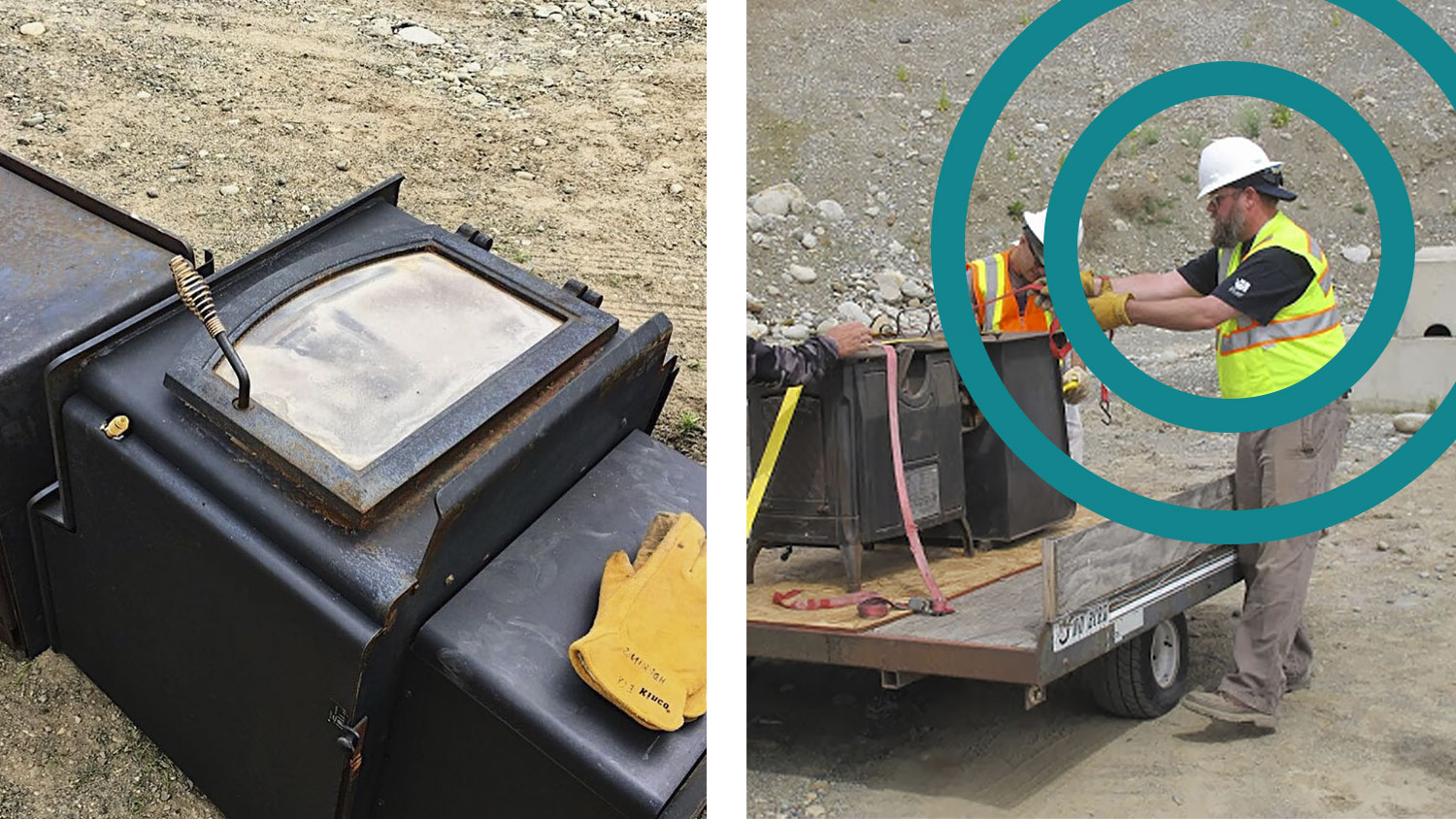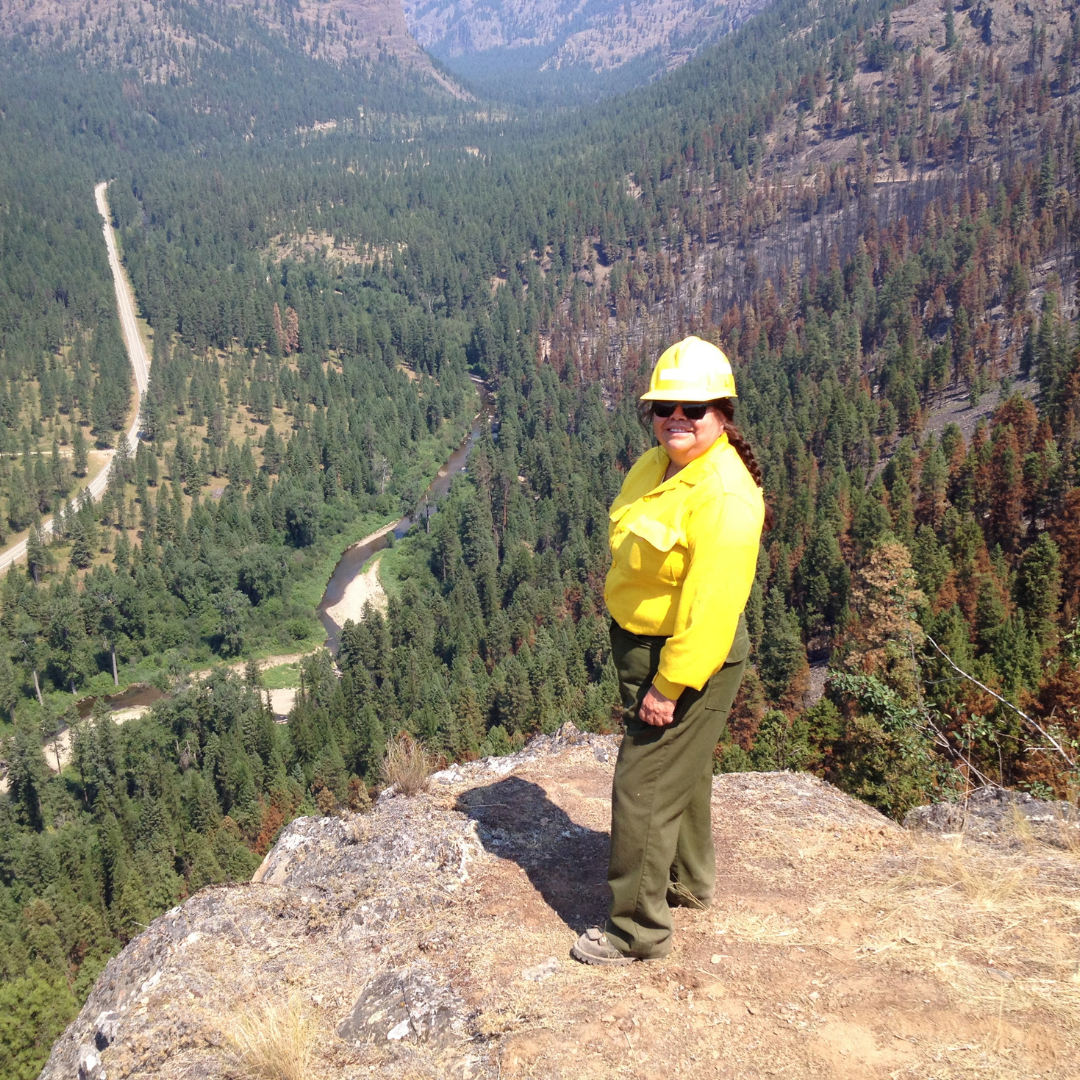Summer: Wildfire Season
(June–October)
In the summer, our work turns to supporting the community in staying safe and healthy in heavy smoke, and promoting fire safety and burn bans. Prolonged episodes of unhealthy smoke exposure such as experienced in the Methow Valley the last several years are increasingly appreciated as true natural disasters. Accordingly, disaster preparedness and response planning are critically needed, utilizing existing infrastructure and developing new systems to help communities cope with several weeks of unhealthy air quality. A concept termed, “Smoke-Ready Communities” has emerged, and defines a community that can adapt to live safely with smoke. In summer, Clean Air Methow offers support through the following:
Daily posts on our Facebook page regarding wildfire smoke forecasts, health information, and other useful tips
Promotion of fire safety burn bans
Distribution of N95 masks
Coordination of getting air purifiers to underserved and at-risk households
Indoor air quality sampling
Consultation with local schools, organizations, and businesses about smoke health risks
LEARN MORE:
Local Wildfire Smoke Information →
A Smoke-Ready Community…
- Knows its sources of air pollution, understands the health risks of smoke, and has access to tools to protect itself
- Has public spaces and buildings with filtration for smoke
- Has resources on hand to support vulnerable and underserved residents of the community
“The vision? Clean indoor air for everyone. We need to start viewing air purifiers or filtration systems as standard safety equipment in the home. A smoke detector alerts you to a potential housefire, and tells you to leave. But when fire threat is distant, and the air is smoky for days on end, we must equip every home with the ability to create clean indoor air that is safe to breathe.”
— Kris Ray, Former Director of the Okanogan River Airshed Partnership and Air Quality Program Manager, Confederated Tribes of the Colville Reservation
Fall: Outdoor Burning
(October–November)
In fall when the wildfire smoke clears, we take some collective deep breaths. But as soon as temperatures drop and moisture increases, the short window opens for prescription burning in service of improving forest health. Additionally, many in our community still practice outdoor burning to clean up their property or dispose of waste. Clean Air Methow believes we can manage healthy forests, with fire as a critical tool, while also protecting public health. We work with local land and forest managers and impacted community members to find workable solutions. Our community’s thinking is shifting about the acceptability of backyard burning when we’re already experiencing so much smoke from wildfire, but not many easy alternatives exist (yet). Fall clean air efforts look like this:
Chipping and vegetation drives as an alternative to burning – Check the events page
Promoting best practices for burning safely outdoors with minimal smoke impact
Communication about planned and real-time prescription burning in our surrounding forests (Via Facebook)
Education on clean home heating and preparing for winter
“It’s about being considerate. Everyone needs to take responsibility for their smoke. Just because it doesn’t bother you doesn’t mean you’re not hurting your neighbors.”
— Phil Millam, former EPA Air Branch Chief and Little Cougar Clean Air Ambassador
Winter: Home Heating Season
(October–April)
Our longstanding pollution issue in the valley stems from woodsmoke. Wood is a cheap, renewable source of heat and is going to be around for a while. Yet, clean (or cleaner) home heating practices are the biggest thing an individual can do to improve air quality. Did you know that most nights in the winter, wood stoves create a low-hanging blanket of smoke that sends our air quality into the yellow or orange category? This bad air lingers in the mornings, and often for days in the stagnant air created by a winter inversion. In winter, we work to support:
Making sure old, smoky wood stoves are put to rest through wood stove buy-backs and our amazing woodstove exchange program
Promotion of air quality burn bans
Home heating best practices workshops, communication and outreach
LEARN MORE:
Home Heating and Your Health →
Spring: Outdoor Burning
(March–June, See Fall)
From an air quality perspective, spring looks very similar to fall in that we tend to see a lot of outdoor burning as well as smoke from prescription fires often marring the viewing of our hillsides of balsamroot and lupine. Additionally, this is the time of year to start thinking about smoke-readiness for fire season, pulling out air purifiers and replacing filters, and ensuring you have N95 masks on hand.
Chipping and vegetation drives as an alternative to burning
Promoting best practices for burning safely outdoors with minimal smoke impact
Communication about planned and real-time prescription burning in our surrounding forests (Via Facebook)
It shows up so reliably now that some call it “the fifth season” - those darkened skies, smells of smoke, and days of indoor confinement. Many of us have lived with it long enough to learn from it.
The Fifth Season is a series of audio stories from people in the Methow Valley and North Central Washington who have found ways to build wildfire smoke resilience. Their experiences can help us protect ourselves and our loved ones the next time the smoke rolls in.
“My own children speak about a fifth season called the fire season. And I hear that term used by many throughout our community now. Many speculate- similar to how they might with regard to winter and snowfall- many speculate as to what the wildfire season might bring this year.”
Godwins/Tom Venable
Keeping kids safe inside
Colm Godwin has asthma. His parents Cara and Eric have found ways to protect him from smoke while he's at home. It's the job of Tom Venable, Superintendent of the Methow Valley School District, to protect him while he's at school. They've all three relied on help from Clean Air Methow as they've developed new smoke-ready habits.
“Every place you live has something, whether it's really heavy rain, or tornadoes, or hurricanes or whatever it is. Wildfire smoke is just part of our life. A couple years ago, it felt a lot more stressful, because we didn't know how to plan for it. And now we just work it into our plans.”
-Cara Goodwin
Albert
Ode to an air purifier
Albert Isensee has lived in Okanogan County since the 1950s. He has some health conditions that put him at risk from smoke exposure, but he doesn't plan to leave the area. There's been smoke here for as long as he can remember. Luckily, methods for cleaning indoor air have improved.
“It's just a fact of life here. So if a person chooses to live here, they better figure out ways to deal with it.” - Albert Insensee
Dr. Wallace
Funks are normal
Dr. James Wallace is a family physician raising his family in Okanogan County. He routinely treats patients who experience not only lung but also mental health effects from wildfire smoke events. These effects are common and normal. Methow Valley community members have identified some helpful ways to cope.
“Community is oftentimes what gets us through some of the worst natural disasters, so make sure you're not isolating yourself too much.” -Dr. James Wallace
Laura Rivera
Protecting outdoor workers
Laura Rivera has lived in North Central Washington since she was three. Her family is from Mexico. When she was younger no one told her much about the wildfire smoke that choked her and burned her eyes. Now she educates other community members about how to limit the health impacts of smoke exposure- a message with particular importance for those who work outdoors.
“I've lived in Chelan County since I was three. And I've seen the effects of wildfire smoke every year. But I was also a part of that group where we didn't really get the information.” -Laura Rivera
Kathy Moses
Getting information to the community
As the communications specialist for the Colville Tribe Environmental Trust Program, and a public information officer for the Mt. Tolman Fire Center, it's Kathy Moses's job to tell people where fires are, what the evacuation plans are, and how to stay safe. That often puts her outside during wildfire smoke events. To Kathy, it's worth the health risks because she's helping members of her community stay safe.
“It's important to notify communities about what's going on with wildfires. I look at it as my public service and something I can do for my community.” -Kathy Moses
Mayor Soo
The right mayor for the moment
Before she became the Mayor of Twisp in 2010, Soo Ing-Moody studied wildfire resilience in rural communities as a graduate student in Germany. So, when the Carlton Complex Fire broke out in 2014, she knew in her heart that she was where she was supposed to be. Now, seven years later, she has some lessons to share with other towns.
“Sometimes there are things beyond a community's control. However, how we react to it, our preparedness, really does determine to a large degree the outcome, the gravity, or the extent of potential damage.” -Mayor Soo
The Fifth Season was produced by the University of Washington Interdisciplinary Center for Exposures, Diseases, Genomics & Environment and Communication Leadership program, in collaboration with Clean Air Methow.
It was envisioned by Liz Walker and Nicole Errett, narrated by Lazo Gitchos, and written and edited by Rachel Miller-Howard with support from Lisa Hayward. Music is by Lynette Westendorf. Funding for the project comes from National Institutes of Health grant number P30ES007033.















